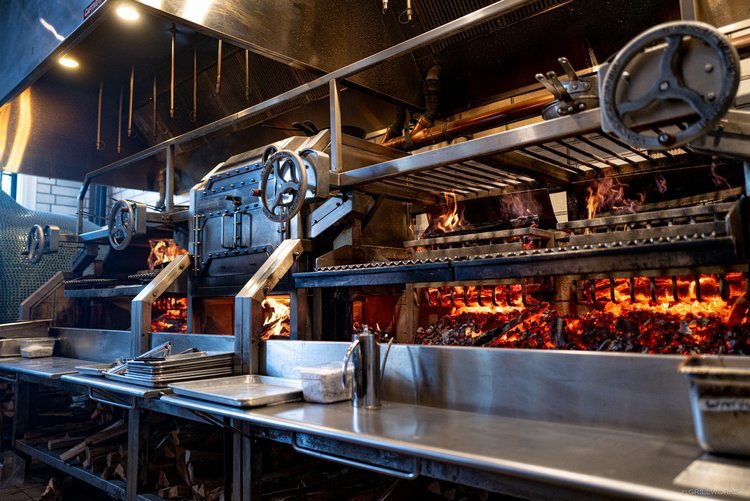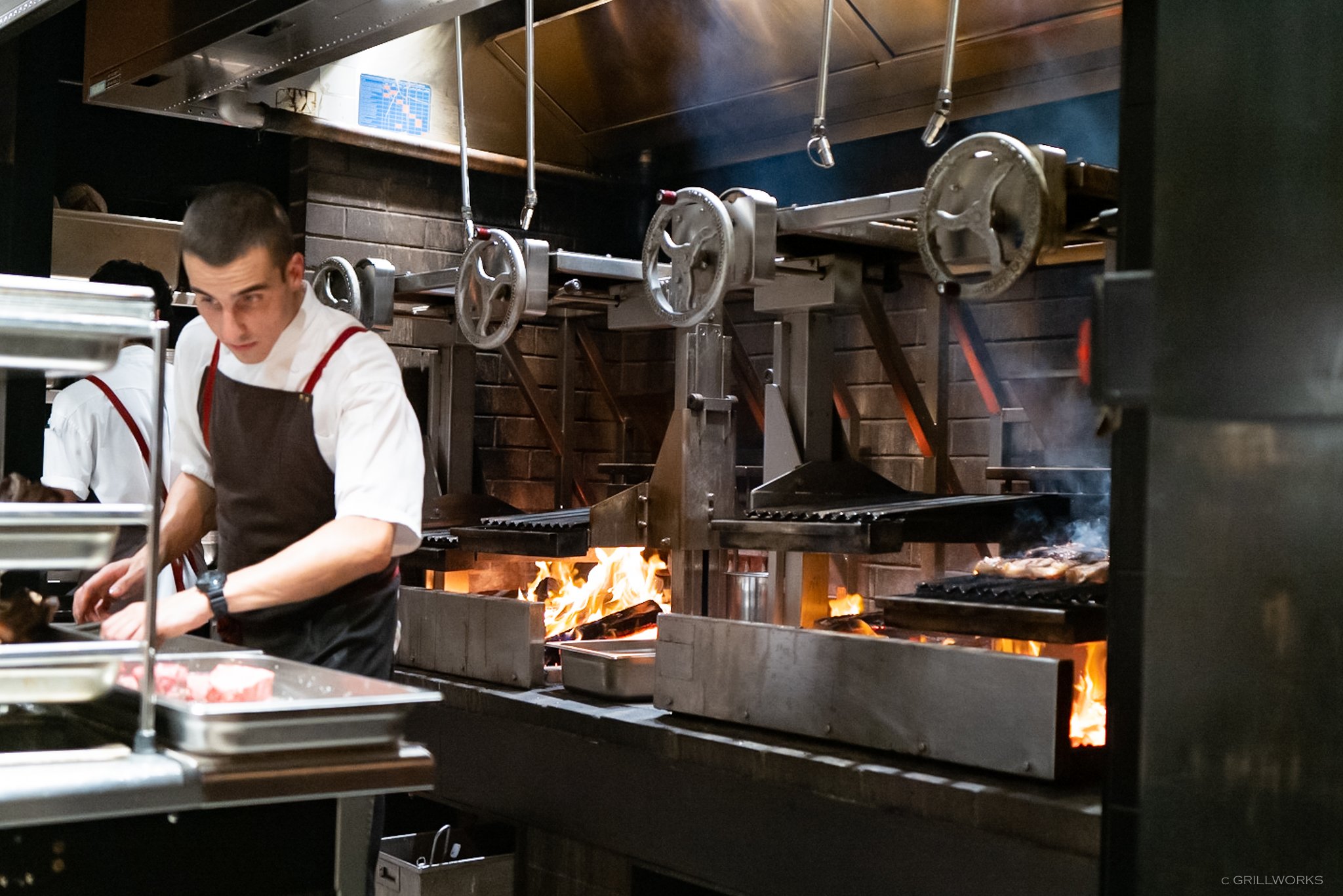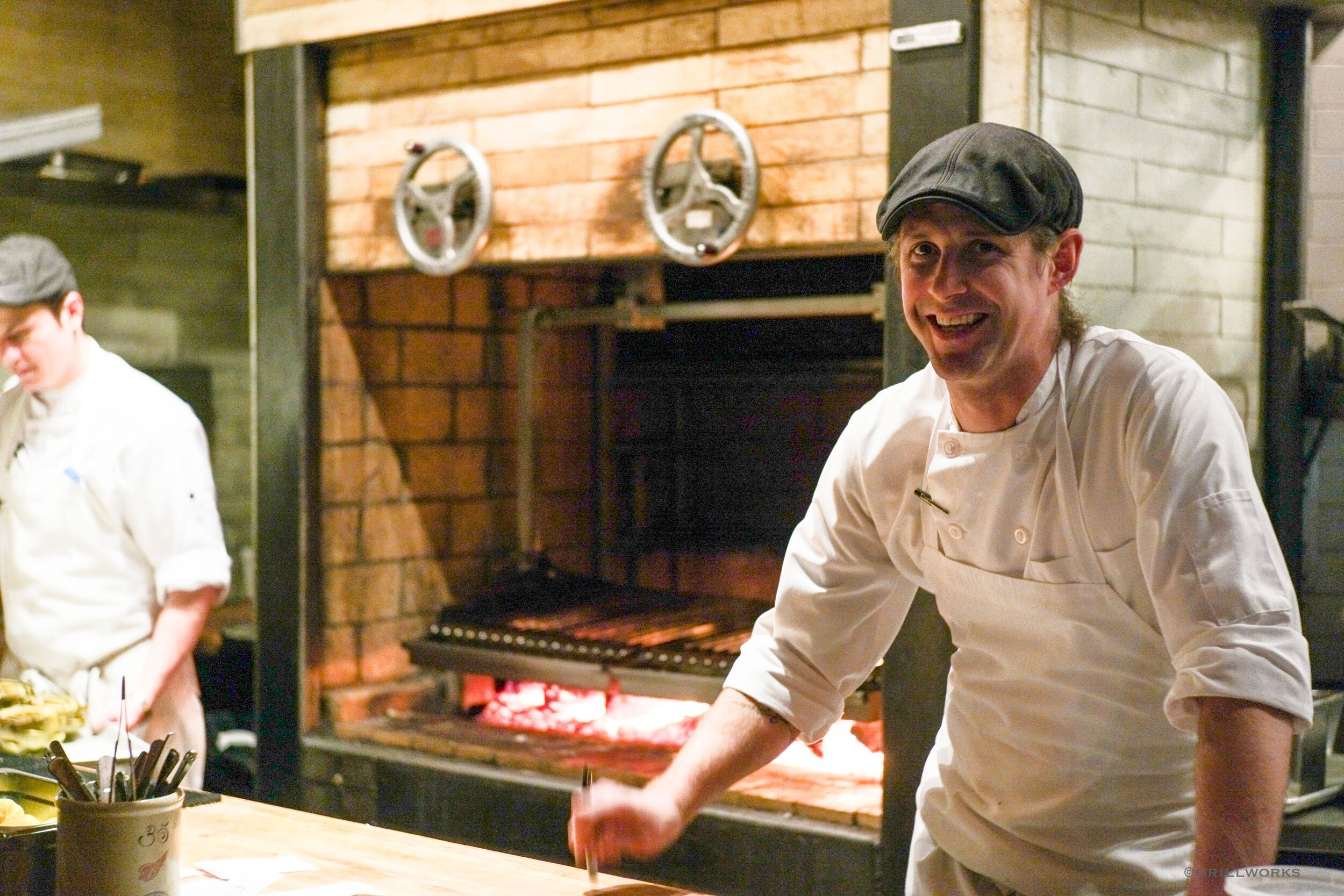Our Wood Grills are Actually Designed for Wood
(While most other “wood grills” are not)
The mighty Infierno X166 doing what she does best. With whole wood.
I attended the KBIS (residential kitchen and bath) and the National Restaurant Association shows this year, showing off our Langelier Elite and new alliance with Hestan by setting it in one of their gorgeous suites (see it at the bottom). Walking both of these shows reminded me of something important. We are one of the very few who design our grills from the ground up to handle whole wood, charcoal, or a mix. It takes FAR more engineering and heft to make an open wood grill that is certified to use actual wood, and yet more to maintain UL/ETL approval across whole professional lines. We embrace flame for those who think that’s key to their cooking (like me), and design so chefs can personally interact with a natural wood fire. The “wood grills” I saw at the show were, with few exceptions, only suitable for charcoal.
.
Supperland restaurant in Charlotte, NC puts on a clinic on how to light their Infierno X166
When I picked up the old drawings from my father’s incarnation of Grillworks there were two models. The Grillery (now Grillworks 20) and the San Antonio (named for the first buyer’s home and now the Grillworks 42). Both elegantly simple and designed specifically to make cooking with a full fledged camp-style fire an easy thing to do, but most importantly a FUN thing to do. A concept that had been largely lost in the American grill market of the time (the 70s and 80s) in favor of gas convenience and briquettes.
The same had happened in the American restaurant scene. Traditional fine French cuisine ruled the restaurant (and cookbook) world. The fire had been tamed and relegated to the closed kitchen, largely taking gas form for precise heat, and hidden from view of the dining room. The goal then was an absolutely repeatable result and the surprise at what emerged from behind the curtain. This approach to fine dining had its advantages and appeal, but to our family’s eye and palate, especially one exposed to Argentine traditions, the absence of the visual feast was felt.
Embarking on Grillworks 2.0, the original grill designs were to remain at the heart of all the wood grills we designed going forward, at all costs preserving the mission to create machines that encouraged both home and restaurant chefs to interact directly with the fire, and have all the tools needed to make cooking over flame fun, flavorful and a joy to behold for everyone. The fastest way to cook? No. The most convenient way? But to me, and those who choose our creations, the most rewarding.
But let’s go over some tangible ways cooking over a whole wood fire offers advantages over other methods.
Spot Temperature Control
Michelin Starred Maydan displays true master of the open fire on one of our custom Hearth Arrays.
Unlike a gas, electric or even charcoal grill, an open wood grill with at least a portion of whole pieces in the mix can have different temperatures wherever the chef wants them. Through adding fuel or moving it around the hearth, searing or slow-cooking zones can co-exist in the same fire box, and relocated at will. There is no limitation to where a burner element might be located, or to the minimum or maximum temperatures available (note: this makes a well-tuned hood and ventilation system even more important*). The temperature desired can be found instantly.
True Wood Flavor
Different types of wood in a fire smell and taste differently because of biological compounds and moisture that remain even after being seasoned for best burning (dried to 8-10% moisture).
If you watch a piece of wood burn closely, you’ll see that where the flame meets fresh wood is where the smoke emerges. These are the compounds being carried out of the wood in the remaining water. Smoke is dry, highly-flavored steam, in essence.
The important thing to bear in mind when weighing charcoal — which is wood that has been burned in a low-oxygen environment to eliminate nearly all the remaining water (typically as much as 99%) — is that the unique compounds in the wood simply cannot escape without moisture. Charcoal is nearly smokeless, and that means it will generate near-zero flavor of its own. For steady heat, great. But that’s really it.
The only way to take advantage of the full spectrum of wood flavors — hickory, oak, apple, you name it, is to use that whole wood in your fire.
Exponential Skill Growth
Learning to bend a wood fire to your will is a skill not well learned in books, nor in most culinary schools. And in my experience not all cooks are interested in learning, as it is hot, intense and sweaty work. On my visits to recently-opened restaurants armed with our larger grills, I consistently hear of the cooks who worked one day in front of the fire never to return, and of those who experienced that same day and declared the station THEIRS for the long haul. Happily the latter outnumber the former.
Danny Meyer’s Marta in Manhattan was a prime example of a chef team who claimed the flames in their Infierno
The learning curve is steep. The opening week you’ll see some nervous work at the flames and return only a couple months later to the same team running that hearth like a symphony. It is a trial by fire in the purest sense, but the cooks that emerge are absolute gold to any restaurant they may move to, or even better — launch themselves.
This is the view from the chef’s counter at Woodcut Restaurant in Sydney, Australia. Twin EXO Pros anchor the room.
Magnetic Customer Appeal
Fire’s appeal to humanity cannot be understated. Even before the flame-kissed dishes hit the table, an open kitchen anchored by a roaring fire stops people their tracks. The saying goes that people “eat first with their eyes”; and this couldn’t be more true of what happens when the human gaze is faced with primal flame. Millenia-past, that fire ensured survival, and eventually cohesive societies.
Today that fascination moment is posted to Instagram.
Yes, it’s Hard!
Some argue that running an open wood grill in a restaurant is difficult, and they are right. Some also say it is inherently unpredictable and impossible to control in a fine-dining environment, and on that they are wrong. Live fire offers orders-of-magnitude wider options and creative opportunities to a chef. Yes — they must be skilled to take full advantage of the full potential there —
but isn’t having a skilled culinary team what every top restaurant is shooting for?
“Our grill is the heart of Lilia’s kitchen.”
~ Missy Robbins, James Beard Foundation Best Chef New York City
Lilia Restaurant in Brooklyn strikes a beautiful balance between the menu advantages and ambiance their grill brings to the room.
*Solid fuel appliances including wood grills are handled in these cases by measuring the total surface area where fire or heat may be produced. This enables appropriate ventilation and suppression calculations. It is ALWAYS paramount that cooks manage their fires carefully. Overfiring is dangerous and to be avoided at all costs.




